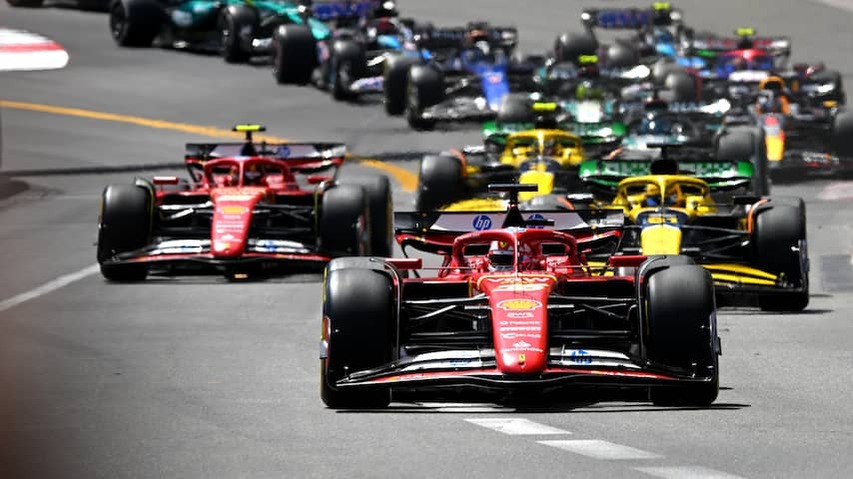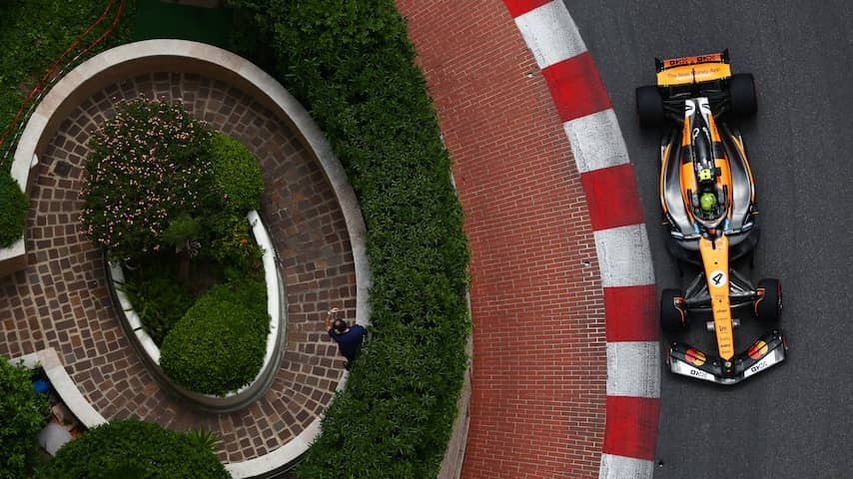
Although Charles Leclerc achieved an emotional home victory in 2024, the Monaco Grand Prix showed its worst side with a lengthy procession. A makeshift solution followed, but now drivers and teams are in the dark about the consequences.
“Last year, due to a red flag, it was effectively a race without pit stops,” Oscar Piastri recalls. The current World Championship leader himself finished second, the position he started in. During an early red flag after a heavy crash by Sergio Pérez, everyone could change their tires and finish the race on them.
The entire top ten finished in the position they started the race. Overtaking proved impossible as always. Max Verstappen would have liked to have had a pillow in his car to get through the sleep-inducing procession.
That has to change, they thought at Formula 1. Therefore, this year there must be not one, but two mandatory tire changes. On a normal circuit, the effect would be minimal, but this is Monaco, where it’s not always about speed and certainly not about overtaking. The right place on the track is crucial, or as teams call it: Track Position.

‘Smooth I’m not a strategist anymore’
The teams’ strategists have been busy listing all the scenarios to win this chess game. “My head is still a bit dizzy from all the scenarios I’ve been told,” Piastri admits after some meetings at McLaren.
Williams team boss James Vowles used to do the strategy at Mercedes, so he knows what he’s talking about. “But I’m glad I’m not a strategist anymore,” he points out all the possibilities.
“What I do know is that you can no longer reduce the pace at the front to keep the field close together. You have to accelerate, because other drivers will stop early and force you into a position. That gives unpredictability. But if you listen in the paddock, nobody knows exactly what’s going to happen. And that’s only good for the sport.”
It is clear that the mandatory two-stopper offers new opportunities for drivers who have nothing to lose. For the drivers at the front, it mainly brings more risks. “You shouldn’t be surprised if a surprising winner suddenly emerges,” predicts Lando Norris.
“It will be very complicated. There will be more luck involved. That’s nice for the people driving further back. For the drivers at the front, it’s of course less so,” the Briton smiles.
How Exactly Does The Rule Work?
In a normal Formula 1 race, it is mandatory to use at least two types of tires during the race. Normally, those tires are changed during a pit stop, but it is also allowed during a red flag situation. In Monaco, two types of tires must still be used during the race, but a total of three sets must be used. Otherwise, disqualification will follow. Without red flags, this results in two pit stops.
Leclerc’s Tactic No Longer Possible
Yet teammate Piastri, just like Norris with the fast McLaren certainly a contender for pole position, still sees the first starting position as an advance on the win. Monaco is often won from pole. Broaden: Leclerc showed last year how to do it. “That pole retains its value for more than 90 percent. If you are fast and start at the front here, then without crazy things it is still difficult to beat,” the Australian believes.
But, Piastri agrees with Vowles’ words, the tactic that Leclerc used last year is made impossible. Ferrari instructed the driver not to go faster than strictly necessary. In a long train of cars, a pit stop immediately meant a fall far back, behind a huge row of cars that would no longer stop anyway. Or as Piastri described it: “You can drive ten seconds slower here without being overtaken.”
But if everyone has to stop twice anyway, there are many more opportunities to take risks. “If you start at the back, you can come in immediately after the first lap. And then drive your own pace in free air. That is certainly possible, yes, if you have nothing to lose anyway,” Verstappen reviews the possibilities.
“In terms of overtaking, this brings us nothing. The cars are far too big for that. But it does offer options. Until this year, you just had to plan that one stop well. As soon as that was successful, you could easily finish the race. But now with two stops there is more to it,” Verstappen sees. “When you have made that first stop, that second one still plays in your mind. You really have to pay attention that it all goes well.”

Responding to Safety Cars or Red Flags
That attention consists of responding to safety cars, virtual safety cars and of course red flags. Free pit stops can result from this, because everyone then has to drive slower and the relative time loss is therefore much smaller. “So people are going to gamble on that even more,” Piastri thinks.
After an early stop you can therefore end up behind a car that is on old tires but stays out in the hope of a safety car. “And then you can lose twenty to thirty seconds and that strategic stop is lost again,” Verstappen emphasizes.
It is also Alexander Albon’s biggest concern. “Just think about how teammates can help each other. Last year in Jeddah, Kevin Magnussen really parked the bus, and his teammate Nico Hülkenberg was able to stop three times further forward without losing places. That is certainly possible here too. And I don’t think you want that,” says the Williams driver. “That doesn’t mean I’m against it. We have to try something, but there is also a chance that nothing really changes.”
Can only go two ways
According to Verstappen, it can only go two ways. “Either it doesn’t matter in the end, or you really get chaos with all kinds of safety cars or whatever.” Nevertheless, the reigning world champion sided with the proponents. That group is large. Most drivers are positive without really knowing what will change and whether anything will change.
“But I like that they have introduced it,” concludes Lewis Hamilton. “Because if you don’t try anything, nothing will change anyway.”